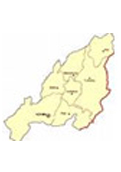A Study on Illegal Immigration into North-East India: The Case of Nagaland
Efforts to control and prevent illegal immigration remain highly inadequate in India; and likely to remain so in the coming years. But, the reality is that unabated illegal immigration has enormous demographic and social implications, capable of creating tensions and conflict between the immigrants and the natives; and more so among the natives.
- M. Amarjeet Singh |
- 2009 |







